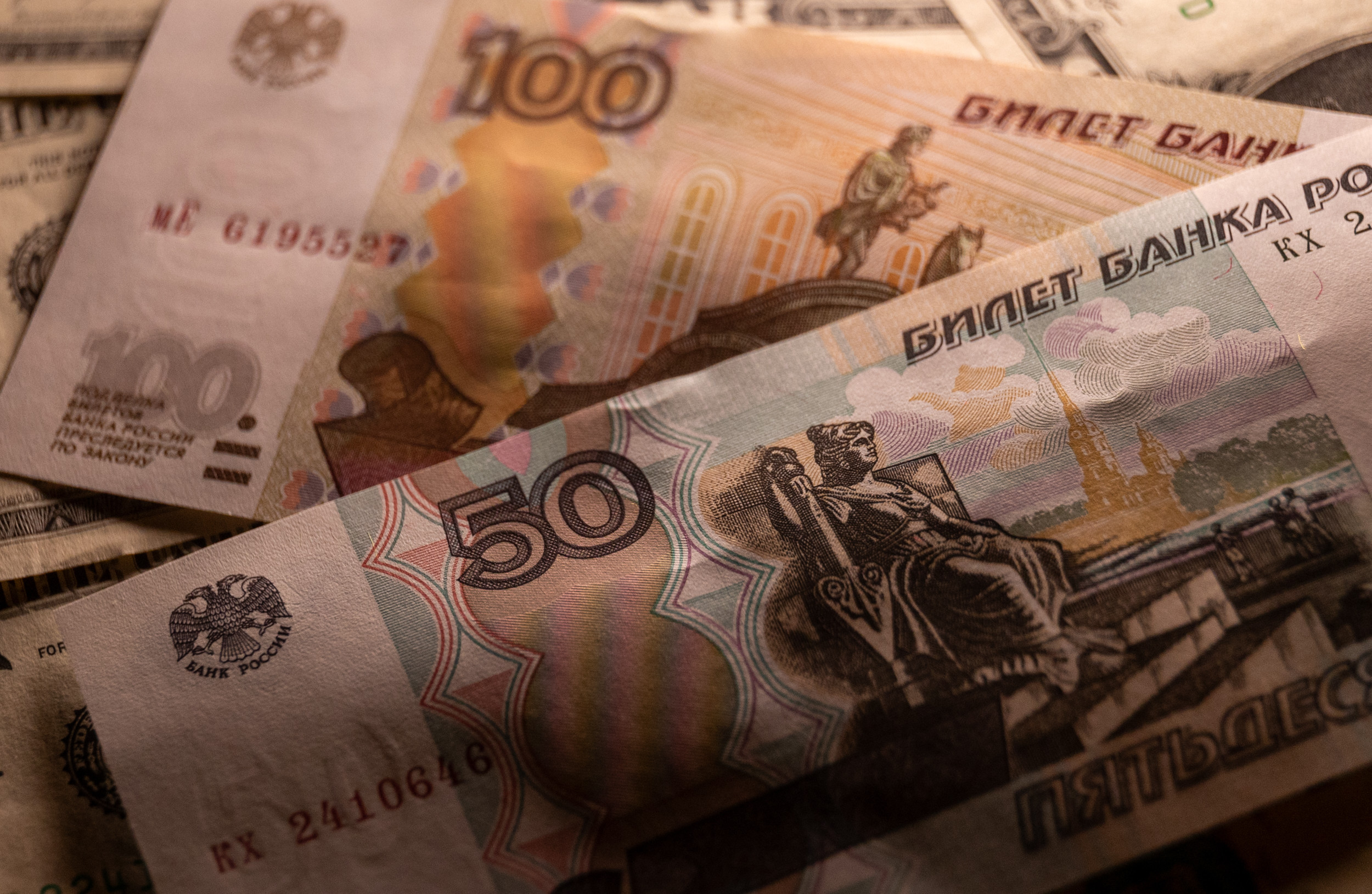
Russia’s economy faces the triple threat of a banking crisis, companies forgoing dividend payouts and a sharp downturn in growth as the sanctions-hit country experiences continued turbulence due to President Vladimir Putin’s full-scale invasion of Ukraine.
The Kremlin-linked Center for Macroeconomic Analysis and Short-Term Forecasting (CMASF) has warned of problems in the banking sector which include an increased likelihood of a run on banks, although it said a full-blown crisis has not happened yet.
The CMASF has told Newsweek that a volatile stock market was one factor contributing to jitters.
Newsweek has contacted Russia’s Finance Ministry for comment.
Matt Cardy/Getty Images
Why It Matters
Russia’s economy has so far weathered much of the western-led sanctions that were aimed at punishing Putin for his aggression and starving his war machine.
However, relatively decent growth fueled by Putin’s record military spending has been marred by inflation and a worker shortage impacted by those fleeing the draft and troop losses in Ukraine as experts warn of longer terms problems for the economy.
What To Know
The CMASF said in a report this week there is an increased likelihood of “a systemic banking crisis” in Russia.
Such a crisis would involve at least one of three things; a run of the banks by depositors, non-performing loans exceeding 10 percent of total banking assets, or large-scale bank recapitalizations exceeding 2 percent of the country’s GDP.
None of those conditions have been met so far, but the risks are growing, it said.
In emailed comments to Newsweek, the CMASF said a sharp increase in the volatility of the main index of the Russian stock market (MOEX) is a good indicator of greater economic uncertainty people feel.
This week, Russia’s stock market took a sharp dive following the threat by President Donald Trump of new sanctions and his jibe after Moscow’s drone and missile barrage of Ukraine that Putin was “crazy.”
The CMASF also told Newsweek a sharp increase in the ratio of money supply to the monetary base reflects the increasing pressure on the liquidity of the Russian banking system. These factors taken together can increase vulnerability and the likelihood of banks experiencing “cash gaps”.
Fight and Flight
In April, the CMASF warned there was an increased possibility of “depositor flight” or a run on the banks. This was caused in part by the prospect of an economic downturn due to Russia’s Central Bank setting a key interest rate of 21 percent to curb inflation of 10.2 percent amid warnings this will stifle lending and investment.
Russian Firms Forego Dividends
It comes as the boards of two dozen Russian companies advised against paying out dividends to shareholders due to declining export revenues and sanctions.
State statistics agency Rosstat said that in 2024, Russian companies generated total earnings of 30.4 trillion rubles ($381.1 billion) down 6.9 percent compared with 2023, or a 15 percent drop when adjusted for inflation.
Firms in mining and energy are among those foregoing dividend payments. such as Gazprom, Norilsk Nickel, NLMK and Severstal, but other could follow suit, the Vedomosti business daily reported.
The outlet reported that the suspension of dividends is linked not only to worse market conditions but also to the high cost of borrowing. Boris Grozovski, an expert on Russia’s economy at the Wilson Center think tank, told Newsweek in January that the high key interest rate had put Russian companies in a very difficult position.
Rising costs, higher energy tariffs, higher gasoline costs, higher wages, higher transportation and logistics costs, meant that net profits are decreasing, he added.
Growth Slump
As corporate borrowers are struggling to service their debt and more households accumulate bad loans, Rosstat said last week that growth in the first quarter of 2025 was only 1.4 percent.
This is three times less than 4.5 percent in the final quarter of 2024 and almost four times less than 5.4 percent for the same period last year.
The Russian economy faces not just a slowdown, but a likely recession, independent outlet The Bell reported, adding that latest official data suggests the economy could dip into negative growth as early as this summer.
What People Are Saying
Center for Macroeconomic Analysis and Short-Term Forecasting: “The current situation is characterized by the ‘resonance’ of several negative signals and trends indicating an increase in macro-financial risks.”
What Happens Next
Although GDP growth has slowed, much depends on whether there is a peace deal in Ukraine which could see Trump restore trade between the U.S. and Russia.
Kyiv and its allies want Washington to maintain economic pressure on Russia and U.S. lawmakers are drawing up a new list of possible sanctions, adding to anticipation on whether this could force Putin to the negotiating table.
